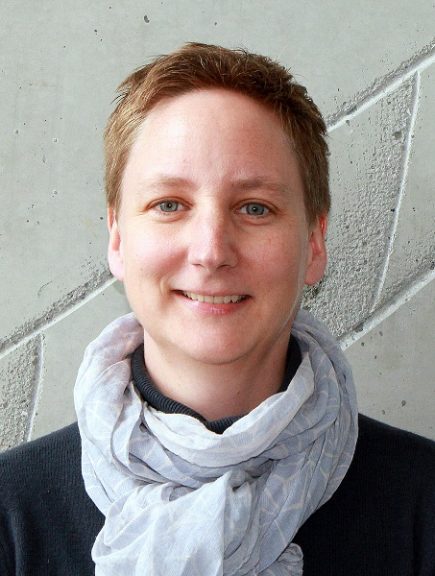The 19th PhD at Greenland Institute of Natural Resources achieved Published 03.06.2018

The Greenland Institute of Natural Resources has functioned as a research centre in Greenland through a period of 23 years, and now the 19th PhD scientist has successfully defended her thesis at Aarhus University. Recently, scientist Katrine Raundrup from the Greenland Institute of Natural Resources defended her business PhD with the title “Movement patterns and habitat selection – insights from West Greenland caribou”.
Scientist Katrine Raundrup’s PhD project concerns the caribou population in Akia-Maniitsoq, one of the large caribou populations in Greenland. In the project, Katrine Raundrup has examined and mapped the caribou migration patterns, and the winter feed was examined, among other things. The project has brought more clarity as to where the animals lived, which areas the preferred and what they ate.
It is not the first time that the Akia-Maniitsoq caribous´ migration patterns have been mapped. It is, however, the first time that data has been collected from a large number of animals, thus, much more information was gathered. In 1997 caribous in this area were also marked, and the composition of vegetation was studied. These studies have formed the standard of reference for the present study.
The vegetation may have changed
Results show that approximately 90 % of the caribou population in Akia-Maniitsoq migrate (move between inland and coast), while the rest of the population is stationary. The routes of the caribou were uncovered by mounting a satellite collar on 40 females. This was done in 2008, and the satellite transmitters worked up to two years. The results showed that from 1997 to 2008 a change of vegetation composition may have occurred. Compared to previous years, it seems that there was more dwarf-scrub and higher scrubland in 2008. This may indicate that the higher vegetation could oust lichen, which is one of the most important food sources for the caribous during winter.
“We are, however, not completely certain that this is the case. We have vegetation maps from 1997 and 2008, both based on satellite pictures and subsequent studies of the vegetation. But to be able to present a more precise assessment of whether the vegetation composition has changed, we need a more recent map,” scientist Katrine Raundrup explains.
The results may be relevant for the management
The results of Katrine Raundrup´s study may be relevant for the management in the Greenland Self-Government.
“Historically, the number of caribou in West Greenland has fluctuated very much. Today, most populations are managed to avoid these fluctuations, but the climate change that for example cause changes in the vegetation composition can affect the caribou. It is therefore important that the management secures large, undisturbed areas as well as areas with lichen-rich vegetation that is important during the winter,” says Katrine Raundrup.
The results from Katrine Raundrup’s thesis are also important with regard to the planning of, for instance, large-scale infrastructure projects. In such projects, knowledge of how the Akia-Maniitsoq caribous use the area is essential in order to take the caribous’ movement patterns into account.
Scientist Katrine Raundrup started her business PhD 1 January 2013 at Aarhus University and completed her project at the Greenland Institute of Natural Resources with supervisors from both Aarhus University and Greenland Institute of Natural Resources.
For more information, please contact:
Scientist Katrine Raundrup at the Greenland Institute of Natural Resources, phone +299 361200, e-mail: kara@natur.gl

